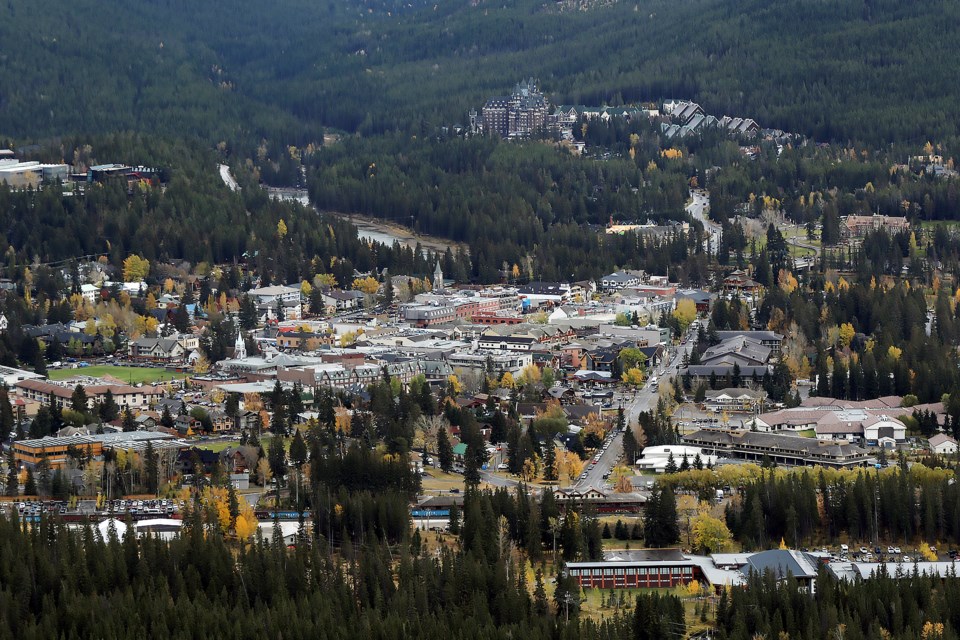BANFF – Warm weather and sunshine meant day-trippers from Calgary and beyond flocked to the mountains over the Labour Day long weekend, breaking a traffic record for 2024 with a total of 32,500 vehicles on Sunday (Sept. 1) in the Banff townsite.
According to statistics provided by the Town of Banff, main entrance vehicle volumes for the September long weekend from Friday through Monday were 118,629, which is an increase of nine per cent from 2023 and an increase of 10 per cent from the pre-COVID-19 pandemic year of 2019 – a record year.
“These stats are a testament to needing more support from the provincial and federal governments when it comes to how people get to Banff and how they move through the townsite and the national park,” said Mayor Corrie DiManno.
“These types of vehicle volumes are not sustainable in our small town.”
The statistics show Sunday had the highest number of vehicles recorded to date in 2024 with a total of 32,539 vehicles counted. The highest volume for a single day previously recorded in 2019 had approximately 200 more vehicles.
Vehicle volumes across the Banff Avenue bridge over the long weekend were 55,737, a five per cent increase from last year but 15 per cent decrease from 2019, while Mountain Avenue volumes to the sightseeing gondola and hot springs on Sulphur Mountain were 19,111, up two per cent from 2023 and down 16 per cent from 2019.
Town of Banff officials say a total of 31 green overrides were ran on the traffic lights over the course of the long weekend to help relieve congestion.
DiManno said a mass transit strategy is needed.
“We’ve had the same road network since 1990 and yet visitation has grown since then,” she said.
“We need to do everything we can to continue enhancing our mass transit system. Whether that’s bus or rail – one now, one later – we know that we need more mass transit from Calgary.”
DiManno said On-It regional transit from Calgary has proven a successful prototype but needs to be scaled up.
“On-It, with record ridership last year, only moved one per cent of our visitors. We know that it works and we just need to see it on a larger scale,” she said.
“The province should really be trying to help us because we’re a major component of their economic backbone in this province.”
Congestion was made worse around noon on Sunday afternoon as a train stopped and blocked traffic on the Norquay crossing for about 35 minutes.
A spokesperson for Canadian Pacific Kansas City Railway was not immediately available for comment.
Last week, council decided to lobby Parks Canada to help deal with the national park community’s traffic chaos and congestion by next year’s busy summer season, particularly to two major tourist attractions on Sulphur Mountain.
Council directed administration to work with the federal agency to develop and implement methods by summer 2025 to discourage people from driving personal vehicles to the Upper Hot Springs, operated by Parks Canada, and the Banff Gondola, owned and operated by American firm VIAD through its subsidiary Pursuit.
Some suggestions included closing the parking lot at the two popular tourist attractions on Sulphur Mountain, except for buses and vehicles with handicap placards, or introducing paid parking at the lots and consideration of a parking reservation system in town.
DiManno said those conversations are ongoing.
“We’ve had conversations around traffic management as well and solutions that we could pilot or apply every summer,” she said.
In January, council reallocated $30,000 previously budgeted to study the feasibility of a land swap with Parks Canada for a park-and-ride lot outside the town boundary to instead look at options for a parkade or surface lot at the east entrance inside the municipality’s four sq-km boundary.
A report is expected from administration to council no later than service review for the 2025 budget at the end of the year.




